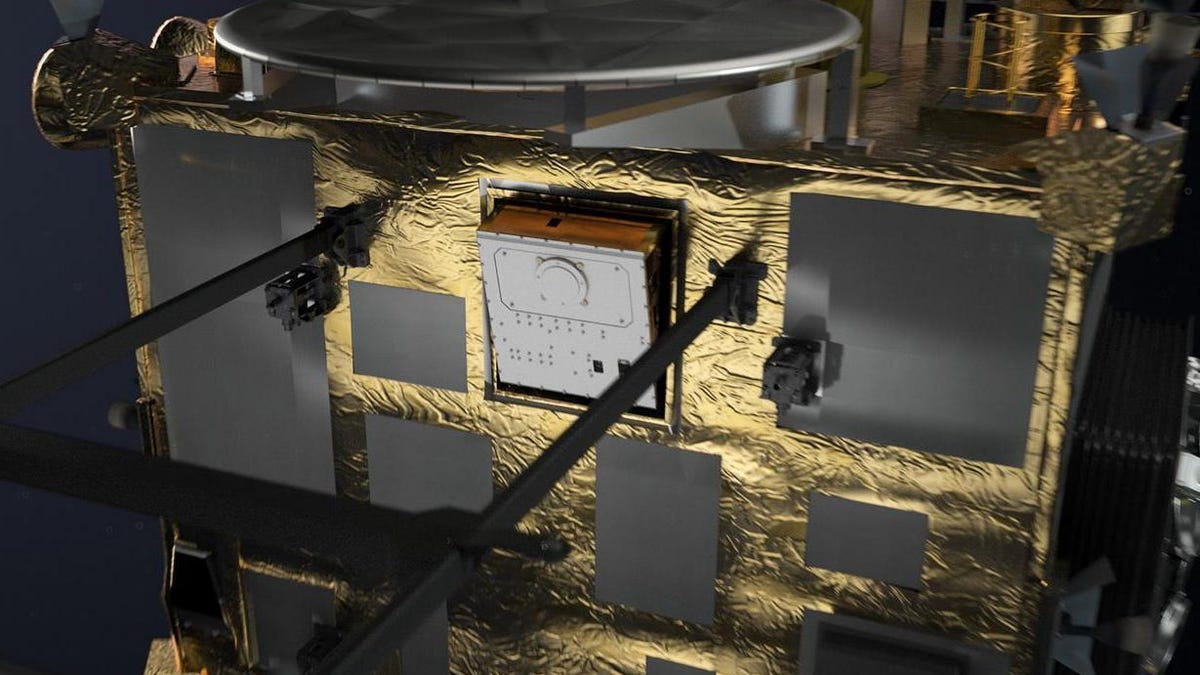Asteroid to welcome third visitor from Hayabusa 2 spacecraft
The hopping Mascot lander is set to land on the asteroid Ryugu and take its temperature.
It's going to get a little more crowded on the surface of the asteroid Ryugu soon.
Japan's Hayabusa 2 spacecraft is sending a Mobile Asteroid Surface Scout (Mascot) lander on Tuesday to check out the asteroid up close.
This image from Hayabusa 2's navigation camera show Ryugu getting closer.
Japanese space agency JAXA has been tweeting and posting navigation photos from the probe showing the looming gem-shaped asteroid growing ever closer. Hayabusa 2 must snuggle up to Ryugu before it can deploy Mascot.
The German Aerospace Center (DLR) and French space agency CNES developed the small box-shaped Mascot lander, which will use an unusual mode of transportation. It will be able to maneuver into a new position by hopping, thanks to a swing-arm feature. DLR calls Mascot the "first measurement laboratory that is capable of moving on an asteroid." Its dimensions are 11.8 inches x 11.8 inches x 7.8 inches. It weighs about 22 pounds.
Mascot will study the asteroid's surface and measure its temperature and magnetic field. It runs on a battery that's expected to deliver about 16 hours of operation.
Mascot will join two tiny Minerva rovers -- also from Hayabusa 2 -- that successfully touched down on the asteroid in September. One of those rovers even filmed a brief movie from the asteroid's rocky surface.
Hayabusa 2 is a sequel to the earlier Hayabusa mission, which visited an asteroid and managed to return a small sample back to Earth in 2010.
Hayabusa 2 hopes to perform a similar feat as the original mission. After investigating the asteroid, JAXA plans to direct Hayabusa 2 to touch Ryugu, snag a sample and bring it back in late 2020.
Scientists hope to learn more about the history of our solar system by studying Ryugu, which is classified as a potentially hazardous near-Earth object. The asteroid poses no threat to our planet at this time.
NASA turns 60: The space agency has taken humanity farther than anyone else, and it has plans to go further.
Taking It to Extremes: Mix insane situations -- erupting volcanoes, nuclear meltdowns, 30-foot waves -- with everyday tech. Here's what happens.


